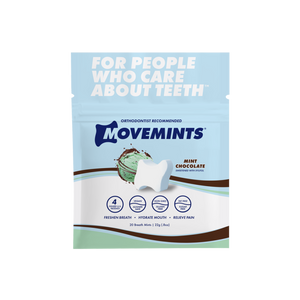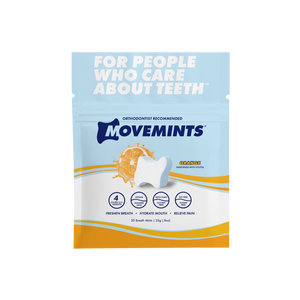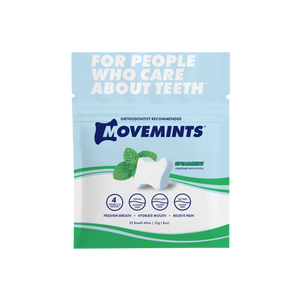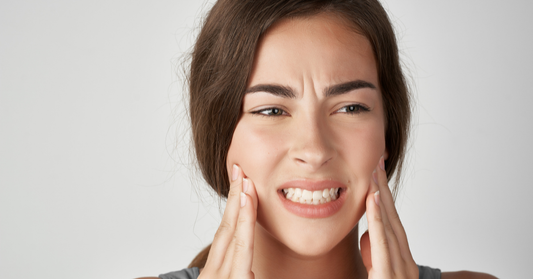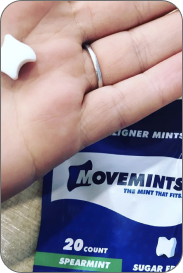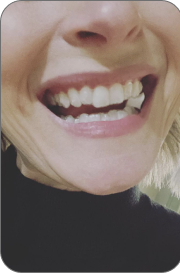Invisalign aligners offer a discreet and modern alternative to traditional braces, but some discomfort, including jaw pain, may be experienced during the treatment process. Understanding the causes of Invisalign jaw pain and finding the right solutions can make your orthodontic journey more comfortable. By using orthodontic wax, performing chewing exercises with Movemints, and maintaining proper aligner hygiene, you can alleviate Invisalign jaw pain and focus on the results of your beautiful teeth.
Key Takeaways: Dealing with Invisalign Jaw Pain
- Invisalign aligners work by applying consistent pressure to teeth, which may cause discomfort and jaw pain as the teeth adjust to new alignments.
- Common causes of Invisalign-related jaw pain include pressure exerted on teeth, rubbing aligners against gums or inside the mouth, and habits such as teeth grinding or clenching.
- Tips for reducing Invisalign jaw pain include using orthodontic wax for relief, performing chewing exercises with Movemints, and maintaining proper aligner hygiene and cleaning by using tools like an ultrasonic cleaner.
If you're experiencing jaw pain during your Invisalign journey, you're not alone. Let's dive into the reasons behind Invisalign jaw pain and explore some effective solutions.
Understanding Invisalign Jaw Pain

The Role of Invisalign in Teeth Movement
Invisalign aligners function by exerting consistent pressure on your teeth, gradually guiding them to their desired positions. This innovative system allows many individuals to achieve a perfect smile without the bulkiness and visibility associated with traditional braces. However, it's natural to experience some discomfort, including jaw pain, as your teeth shift. This pain usually indicates that the Invisalign treatment is effectively working as your teeth adapt to their new alignments.
Common Causes of Invisalign-Related Jaw Pain
Jaw pain during Invisalign treatment can arise from multiple factors. As your teeth shift under the pressure of the aligners, this can cause discomfort that affects your jaw muscles and joints. New aligners might also feel tight at first, adding to this sensation. In addition, the edges of new aligners can rub against your gums or the inside of your mouth, and habits like teeth grinding or clenching, often intensified by the aligners, contribute to the pain. Recognizing these causes is essential for seeking effective relief.
Tips for Reducing Invisalign Jaw Pain
Experiencing some discomfort during your Invisalign treatment is not unusual. However, there are several strategies you can employ to alleviate Invisalign jaw pain and make your orthodontic journey smoother. Here are some tips that can help you minimize discomfort and focus on the results of straightening your teeth:
- Using Orthodontic Wax for Pain Relief: Apply orthodontic wax to the irritating edges of Invisalign aligners to create a smooth barrier, prevent mouth sores, and provide relief from sharp edges; remember to remove the wax before eating or brushing and reapply as needed.
- Chewing Exercises with Movemints: Enhance your aligner fit and comfort by using Movemints. These mints are designed for use with aligners, supporting proper seating and effective tooth movement.
- Proper Aligner Maintenance and Cleaning: Regularly clean Invisalign trays using approved methods like denture cleaner soaks or brushing with a soft-bristled toothbrush to minimize discomfort, prevent bacterial buildup, and promote better oral health and a more comfortable treatment experience.
When to Consult Your Orthodontist
While mild discomfort is normal, there are times when it's important to seek professional advice. Knowing when to contact your orthodontist can help you address any serious issues before they escalate.
Persistent or Severe Pain
If you experience persistent or severe pain that doesn't subside with home remedies or over-the-counter pain relievers, it's time to consult your orthodontist. They can assess whether the pain is a normal part of the treatment process or if it indicates a more serious problem that needs to be addressed.
Issues with Aligner Fit and Comfort
Occasionally, you may encounter issues with the fit and comfort of your Invisalign aligners. If you notice that your aligners are not fitting properly or if the discomfort persists despite following the recommended tips, your orthodontist can help. They can determine whether adjustments are needed or if there is an underlying issue that requires attention so that your treatment progresses smoothly.
Using Movemints for a Comfortable Treatment Journey

Invisalign aligners offer a modern approach to orthodontics, though they can sometimes cause discomfort. Movemints are here to enhance the comfort of your treatment. These sugar-free mints are designed to fit between your aligners, aiding in proper seating and reducing pain. With over 16 million sold, their effectiveness is clear.
Using Movemints is easy and beneficial. Simply place a mint between your aligners, bite down gently, and enjoy the fresh flavor while it helps seat your aligners correctly. Besides aiding in alignment, Movemints also freshen breath and alleviate dry mouth. They are gluten-free, vegan, non-GMO, and orthodontist-developed, making them a safe choice for aligner users. Movemints allow you to experience a minty, fresh sensation as you progress through your Invisalign treatment.
Frequently Asked Questions
Does Invisalign cause jaw pain?
Yes, Invisalign can lead to jaw pain, but this discomfort is typically temporary. As the aligners gently move your teeth to their desired positions, the pressure they exert can cause some pain. This is a normal aspect of the orthodontic process while your mouth adjusts to each new set of aligners. Most patients notice that the initial soreness diminishes after a few days. If the pain persists or becomes severe, it's important to consult with your orthodontist.
Why does my jaw feel weird after Invisalign?
After starting Invisalign, your jaw might feel unusual due to the new movements of your teeth. These adjustments can lead to sensations in your jaw muscles and joints, resulting in temporary discomfort. In addition, the unfamiliar presence of aligners can make your jaw react as it adapts.




